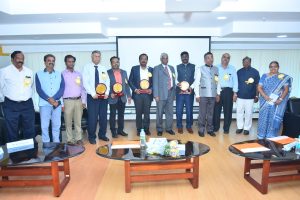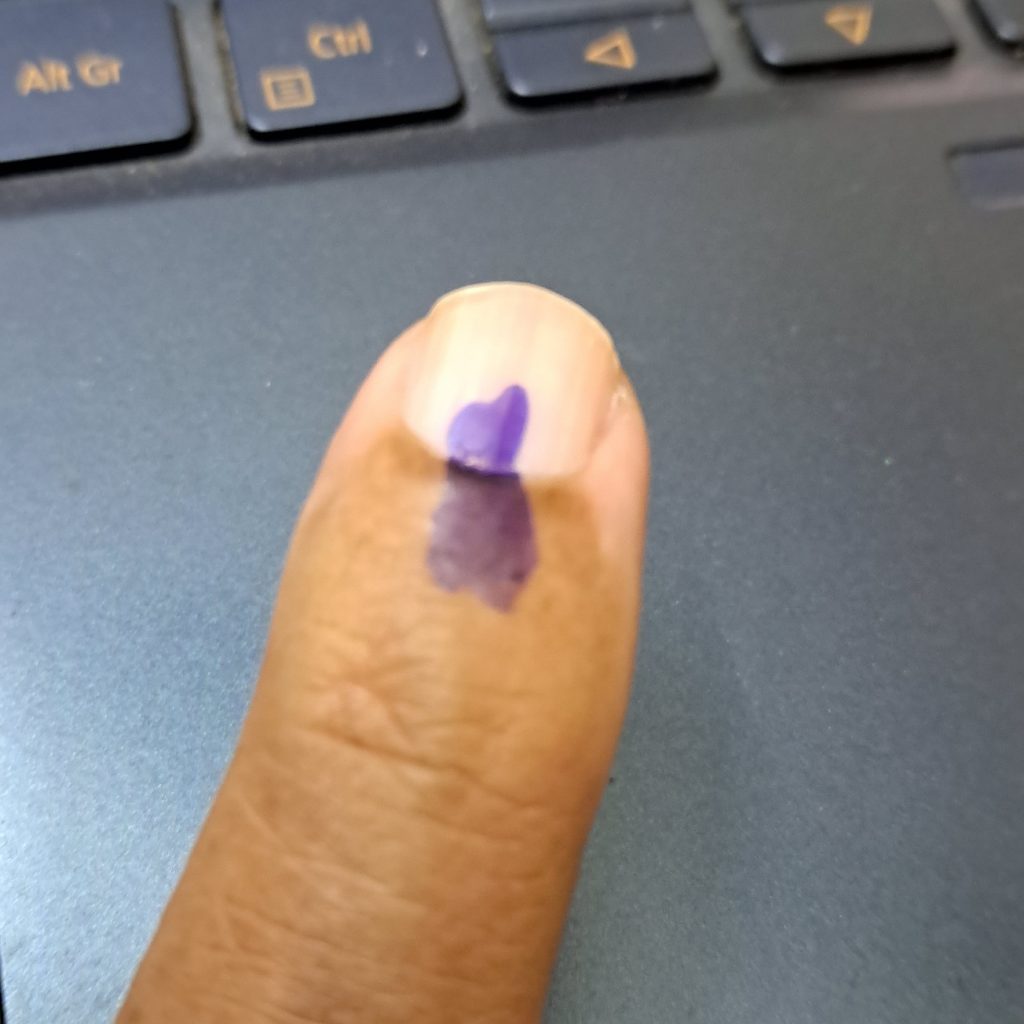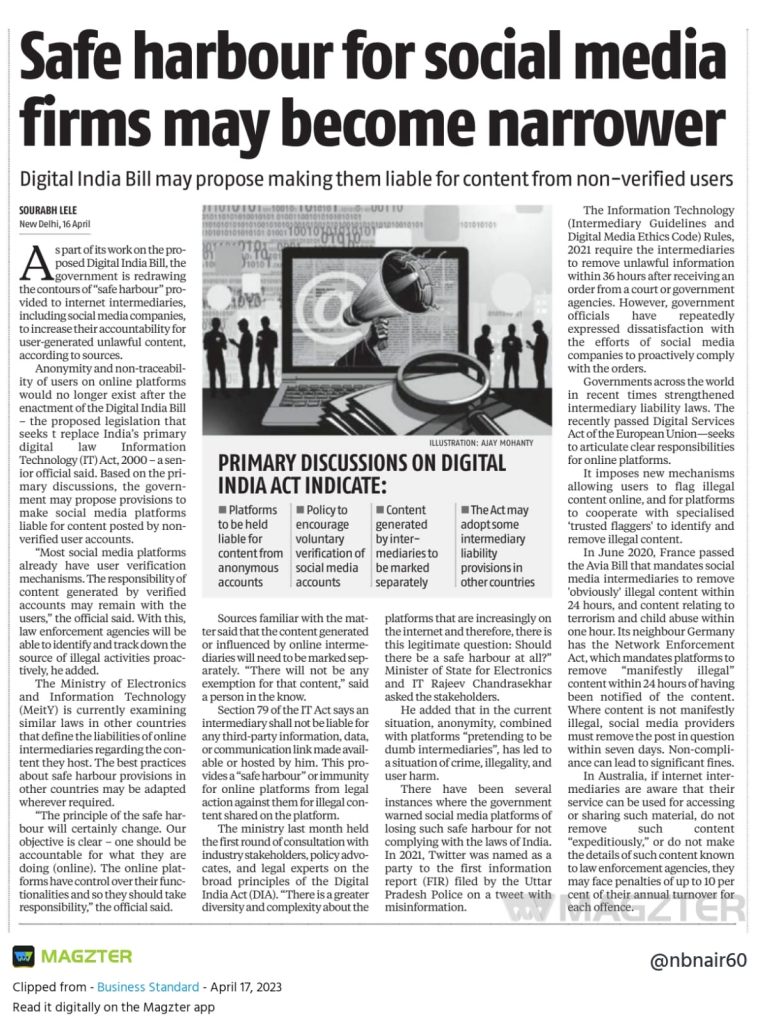While one section of the political parties propagate the view that Democracy is under threat in India, I have one question to ask the community whether the threat to Indian democracy is from our top Court itself?
Presently the Supreme Court is hearing a petition regarding the same sex marriage where the Constitution bench is trying to interpret the institution of marriage, what makes a person man or woman , what is the concept of marriage etc.
Supreme Court thinks that the questions it is addressing are questions of law. But it appears that the questions being addressed are questions of the Society. The institution of marriage is a societal order and the laws related to marriage address some peripheral issues that correct aberrations.
However, what the Supreme Court is trying to do is to interpret the societal concept of marriage itself and whether there is any rule that it has to be between two persons of different gender and why law should not be made to recognize same sex marriage.
In my view irrespective of the final decision that the five wisemen arrive in the end, the society will consider this an intrusion on its societal norms.
In the past Supreme Court was arrogant enough to interfere in the customs of the Shabarimala temple. Often it interprets the constitution though the Court itself is a creation of the constitution. There are judges who say that what is written in the constitution is not sacrosanct but what the judges interpret is sacrosanct. Supreme Court has created its own rule that certain parts of the Constitution is beyond the powers of the Constitution makers themselves since they form the “Basic Structure” forgetting that if some body had the power to create the basic structure, the same body should also have the power to change it.
Some time back some legislators changed the basic structure of the constitution to add words such as “Secular” into the preamble. No body argues whether this was or was not an alteration of the basic structure. Supreme Court needs to ponder over this.
In Physics there is a law called “Principle of Uncertainty” which says that we cannot measure the position and velocity of an electron simultaneously. If we try to measure the velocity, the position will change and if we try to measure the position, the velocity will change.
Similarly Supreme Court is a creation of the Constitution and if it interprets the Constitution, the inherent power of the Supreme Court will change. Supreme Court is not “God” and create its own interpretation of the Constitution under which its own existence remains.
Our Constitution makers gave some powers to the Supreme Court and left some powers to the legislature. There was no conflict in this arrangement since the executive and the judiciary had different roles. The executive would make the laws and the Judiciary would interpret.
However this system has been corrupted with the approach of the Judiciary that it assumes powers to interpret the constitution itself. Tomorrow if the legislature wants to change the Constitution, can Judiciary come in the way?
Sooner this aberration is corrected, it is better for the Indian society.
Though the Judiciary can pat its own back and say they are upholding the constitution by taking complete control of what should be there in the Constitution and What should not be there and how any word in the constitution has to be interpreted, we are aware when it comes to the Crunch, the Supreme Court does not support the real democracy.
We are all aware of what the Supreme Court did when Mrs Indira Priyadarshini alias Indira Gandhi imposed Emergency. Now we are seeing that the Supreme Court is silent on the Police atrocity in Punjab illegally arresting the Times Now Crew members including a lady journalist and held them custody for several days hoisting false cases.
This is the same Supreme Court which was willing to sit in the midnight to hear the petition of a terrorist. It saw human rights in that context but not in the context of Bhawana of Times Now.
It is therefore time for Supreme Court to voluntarily put a restriction on itself and respect the Constitution of India. Respecting constitution of India includes not usurping the power to re-write the Constitution.
But “Self Regulation” against absolute power is against human instinct and it requires a philosophical level maturity for any human being or an organization of human beings to voluntarily give up powers when no body can challenge them in usual course. Supreme Court needs to prove that it has reached that level of maturity to impose a self regulation on itself and vow not to impose itself above the Constitution and the Society.
I hope that the “Same Sex Marriage” case is a fit occasion for the Supreme Court to publicly announce that Supreme Court is part of the Society and does not interpret societal issues from its limited interpretation of words in a law and also that it respects the Constitution and the power of the legislature to make the Constitution even if it is not to the liking of a few lawyers.
In the absence of a national referendum on the same sex marriage issue, we need to wait for the people to vote in the Parliamentary election where Same Sex Marriage legislation becomes part of the manifesto of one of the political parties. Alternatively the Supreme Court should order a referendum on this issue through the Election Commission itself.
If the Constitutional Bench of the Supreme Court considers itself the “Constitution Re-Writing Bench” then we have dark days for Indian Democracy ahead of us not from the bad laws that the Government may make but by the bad interpretation of the law that the Supreme Court makes.
Today, we are exercising our right under the Constitution by exercising our franchise in the Karnataka State Elections. Of course, this is a vote for the Assembly election and not for the Parliament. But even the state assembly is part of the Constitutional structure of the Country and hence the vote in the state assembly is a vote for the strengthening of the Constitutional structure of India of which the Supreme Court is a part.
On this august occasion, the above thoughts crossed my mind and I wanted to share it with the citizens of India who are the real custodians of the Indian Constitution.
I hope that the Supreme Court takes this as a friendly advise from a senior citizen of India who has his own rights under the Constitution far beyond what any institution created by the constitution can assume for itself.
Naavi













